Whether you're making a weeknight dinner for your family or hosting guests for the holidays, choosing pork for your main dish is a delicious and budget-friendly option. And this guide to common pork cuts and how to cook them will help you every step of the way!
This is a sponsored conversation on behalf of the National Pork Board. As always, all opinions are my own. Thank you for supporting the organizations that help support this blog. This post contains Affiliate Links. Please see the disclaimer here.
This past October I had the pleasure of joining the National Pork Board and a group of blogger friends in Springfield, Illinois to get a behind-the-scenes look at how pork makes its journey from the farm to your fork. I always prioritize connecting with the agriculture industry in my schedule each year because it's so important to bridge the gap between where our food comes from and when it makes it's way onto our plates. So I've put together this guide to share my experience and also what I learned about choosing and cooking with pork.

Pig Farming: what really goes on
We spent our first day in Illinois seeing exactly how Market Pigs are raised starting with gestation all the way through finishing. Our first stop was Borgic Farms Inc. owned by Phil and Karen Borgic. This third generation family farm has over 10,000 sows (momma pigs) and partners with 50 other family farms who raise their pigs from weaning age until market.
At the start of the tour, every single person who enter's the barn must shower in and then shower out when they leave. This means that we had to actually remove all of our clothes on one side, take a full shower and exit on another side where the provided all new clothes for us (including undergarments, socks and shoes). This is to protect the health of the sows and piglets from outside germs. Now I know this might sound cumbersome, it's actually pretty easy. But more importantly, it was one of many things I saw and participated in that day that made me feel very good about where my pork comes from.

I was thrilled to be able to tour the farm with Phil as my guide. I was especially appreciative of the fact that Phil and the entire team at Borgic Farms are all about transparency. Phil made a point to tell us that if we have any questions or see anything we don't understand to ask about it. Nothing was off limits.
At the start of the tour, once we were all showered in, Phil and Dr. Aaron Lower, their veterinarian talked us through their process and practices. At Borgic Farms the pig's well being is top priority. The animals are treated with the utmost respect and you could truly feel the love each team member has for the animal is everything they did. Every single thing they do throughout the pig's time on the farm is based on years and years of research that they've done on what helps the pigs thrive; and it shows in the end product. Pork Quality Assurance (PQA) is the ongoing education and certification program that ensures continued improvement in how they farm and the use of technology to streamline to process and make sure that the pigs are living in optimal conditions was simply amazing.
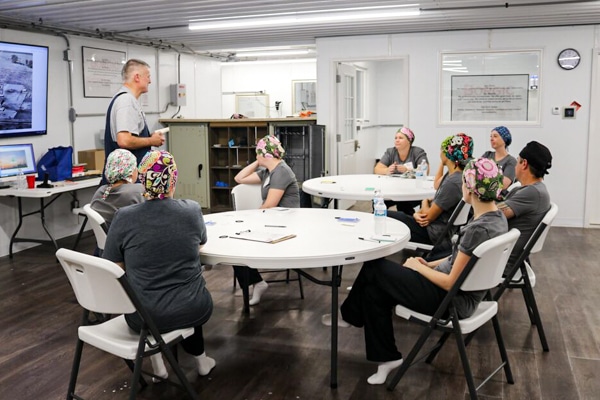

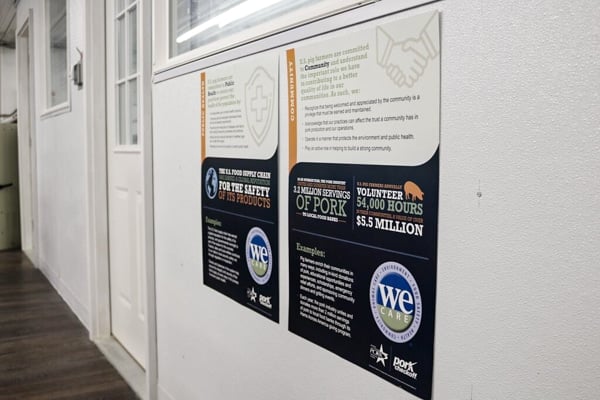
We toured the farm and got to see the area for gestation (where the pregnant pigs live), farrowing (where the piglets are born) and nursery (where the piglets go after weaning before they eventually head to a different farm for finishing). A particular highlight for me was being allowed to birth a piglet! Throughout the tour it was plain to see that the animal were all extremely calm and very happy.
After lunch we also spent some time at Dunkirk Farms, one of Borgic Farms partners in finishing. While there, we got to learn a little bit about sustainability which is the key to successful farming. This includes using manure as a natural fertilizer for crops (there were definitely some smells on this trip!). These crops then become feed for the animals. Needless to say, the carbon footprint in minimal.
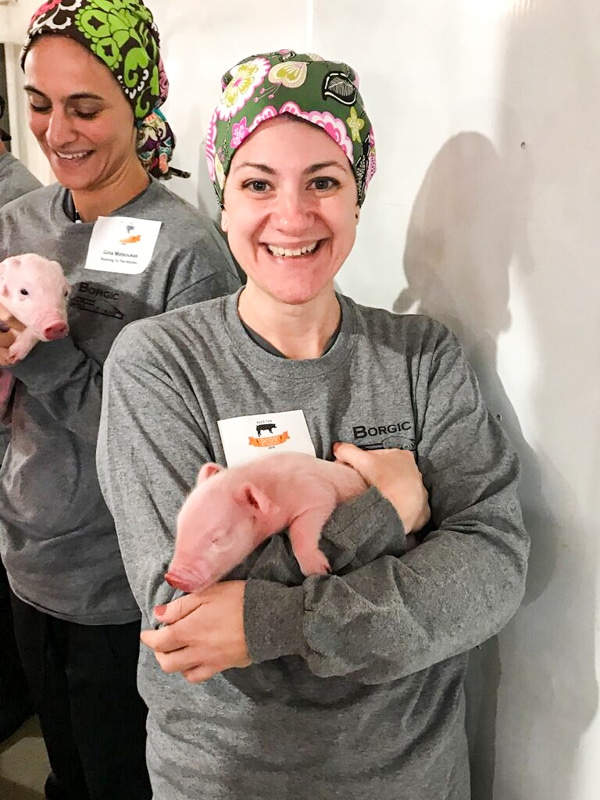
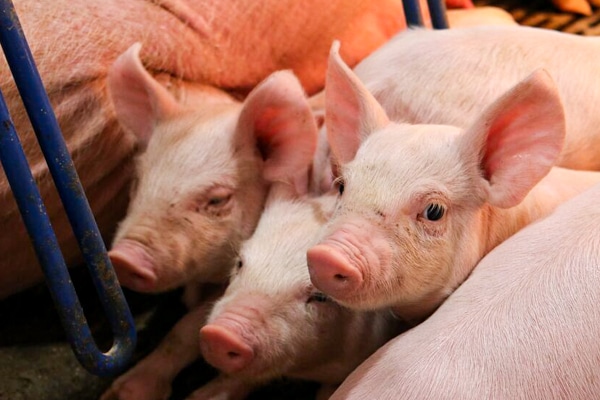
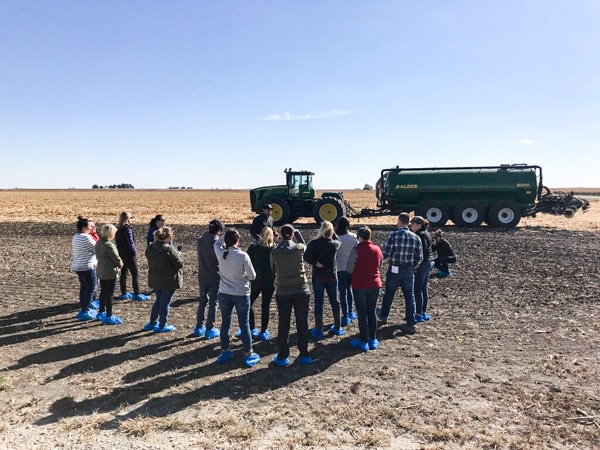
Choosing pork cuts
The second day was spent ing the kitchen. We got to join chefs Neel Sahni and Kurt Kwiatkowski to learn all about selecting pork and cooking pork. Neel actually broke down half a pig for us while Kurt prepared a variety of different pork recipes. As you can imagine, we ate really well!
What to look for when choosing pork:
When you're at your grocer's meat case, there are a few things to look for when choosing your pork cuts of choice.
- Color: when choosing pork, prioritize color. The color determines water holding capacity so darker red means juicier, and lighter white means pork quality. And try to take it away from the lights in the meat case- they may make it look redder than it really is.
- Feel: gently press the pork, it should spring back.
- Liquid: you don't want to see a ton of liquid collecting up at the bottom of the package because if it's there that means it's out of the meat and the pork will be less juicy.
- Marbling: keep your eyes open for nice marbling.
A few other things to know when at the meat case:
- The term "solution enhanced" means that the pork has been injected with a mixture of water, salt and sodium phosphate to keep the meat tender.
- The USDA stamp lets you know it's been inspected and is safe to eat.
- The term "no hormones" is actually just a form of marketing. It's actually illegal to use hormones in raising pigs.
- Pork is already a great value but if you can purchase a whole pig then it brings even more value (just know that you'll need someone to break it down for you).
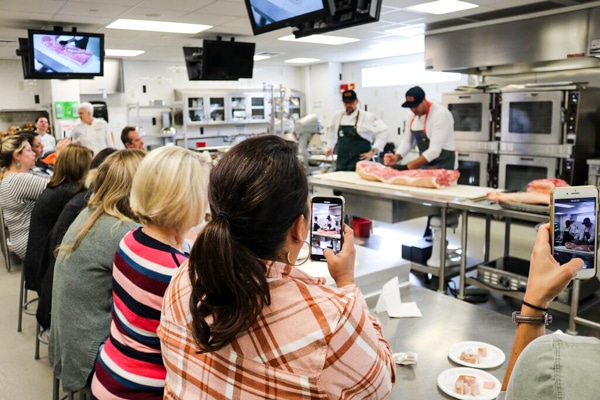
Popular cuts of pork
While there are many great cuts of pork, here are some of the more popular cuts you'll likely find at your local store and how to cook them:
- Pork chops:
- Other names: New York Chop (top loin), Ribeye (rib chop), Sirloin chop, Porterhouse (loin chop).
- Best for: Grilling, saute, braising.
- How to prepare: Season well and sear it on the grill or in a pan to 145 degrees. Rest.
- The result: A tender and delicious cut of meat with a bit of pink in the middle
- Pork roast:
- Other names: Leg/fresh ham, Blade roast (shoulder), New York roast (top loin), Sirloin roast, Pork loin center roast, Crown roast, Rack of pork
- Best for: Roast/bake, Barbeque, Braise (for the shoulder).
- How to prepare: Season well and roast to 145 degrees and rest. Or roast low and slow until fall-apart-tender.
- The result: A tender and delicious cut of meat. If roasted, there will be with a bit of pink in the middle
- Pork ribs:
- Other names: Back ribs, Country-style ribs, Spare ribs (St. Louis style).
- Best for: Roast/bake, Barbeque, Braise.
- How to prepare: Season well and or barbeque low and slow until tender.
- The result: A tender and delicious ribs.
- Pork tenderloin:
- Other names: Loin cubes (kabobs), Tenderloin
- Best for: Roast/bake, Grill/broil
- How to prepare: Season well and roast or grill to 145 degrees and rest.
- The result: A tender and delicious cut of meat with a bit of pink in the middle
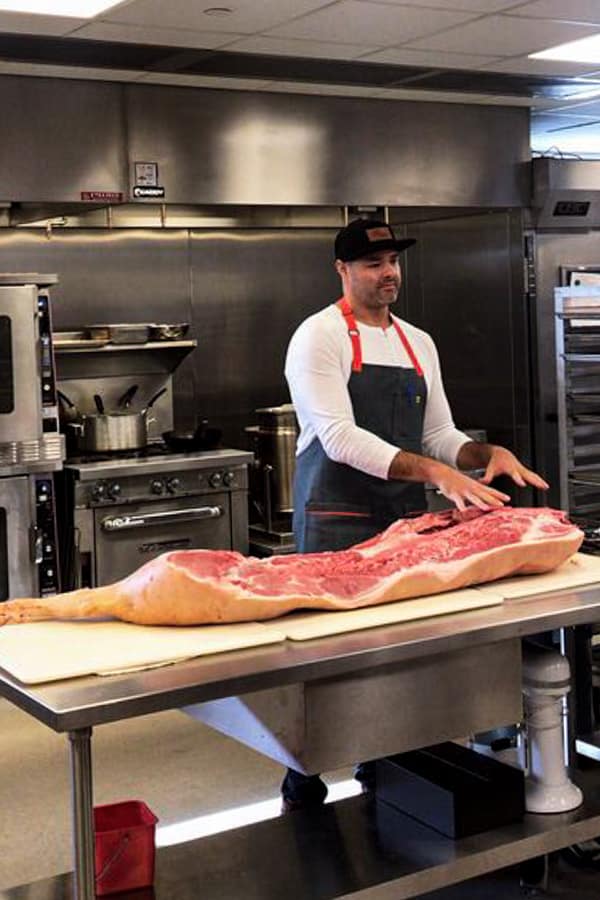
What is the ideal pork temperature to cook to?
Although there's a popular misconception out there that pork should be cooked to 165 degrees, this is wrong in most cases (unless you like your meat extra tough). As per the USDA website, for whole muscle cuts of pork the safe pork internal temp is 145 degrees with a 3 minute rest time after cooking. Yes, there will be a small amount of pink in your pork. This is a good thing. It's will be super tender, juicy and delicious. I would still cook ground pork to 165 degrees.
You also need to factor in crossover cooking. Basically, when you remove the pork from your heat source, you don't want to cut into it right then and there. It needs a good 3 minutes to rest and I like to put it on a plate and tent it with foil. It will cook a bit more as it rests and the juices will redistribute through the pork instead of immediately draining out. Trust, me, it's worth the wait!
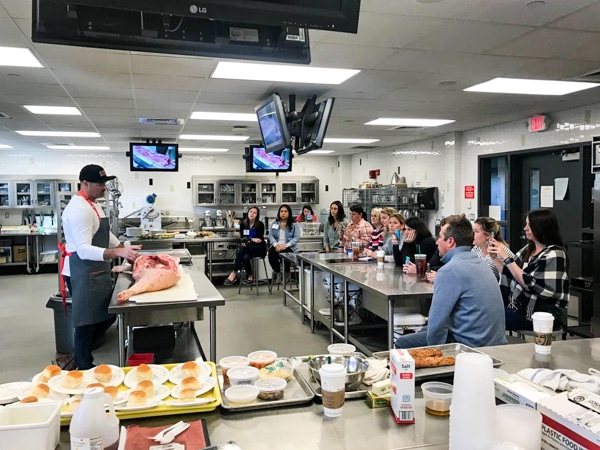
Other tips for cooking pork:
- Roast/bake: around 350 degrees, uncovered in a shallow pan unless otherwise noted.
- Broil: about 4-5 inches from heat turning halfway through cooking time.
- Grill: over direct, medium heat turning once halfway through cooking time.
- Barbeque: around 325 degrees over indirect heat unless otherwise notes.
- Saute: with a little oil over medium-high heat, turning once halfway through cooking time.
- Braise: sear all sides until brown in a little oil over medium-high heat then add liquid halfway up the sides. Bring to a boil, cover and simmer until tender.
- Stew: can be cooked covered, with liquid at a slow simmer until tender.
- How much to buy: in general for a pork chop it's around 4 ounces per person and for a roast plan for around 6 ounces per person (or 8 if there's a bone)
- Marinating: for as little as 30 minutes and up to a couple days. I prefer 6-8 hours. Be sure to dispose of leftover marinade for safety reasons.
- Slicing: When slicing pork, make sure you cut across the grain!
- Safely storing:
- Refrigerate or freeze as soon as possible and label with the original date if freezing.
- If it's going to take longer that 30 minutes to get home, bring a cooler and some ice. Unless it's vacuum packed, it's best to remove the beef from it's original packaging if possible. That said you can still freeze it in it's original package, as long as there are no temperature fluctuation.
- Cooked portions should be refrigerated within 2 hours of cooking.
- Ground pork doesn't last as long as whole muscle cuts, typically only 1-2 days.
- There are three safe ways to defrost meat: in the refrigerator, directly into the cooking vessel (with adjusted time for frozen meat) or fully submerged in a bowl of cold water that is changed every 30 minutes.
- Use a separate cutting board and utensils for handling raw meat and wash your hands often to avoid cross contamination.
- Don't hesitate to talk you your butcher, they're there to help and have so many amazing tips!
Now go and make some awesome pork dishes! And don't for get to get more information about all-things pork from these locations:
National Pork Board:
Facebook | Twitter | Instagram | Pinterest | Youtube
Real Pig Farming:
Facebook | Twitter | Instagram | Youtube
Here are some of my favorite pork recipes:
- Pork stew
- Easy pulled pork
- Smothered pork chops
- Hawaiian grilled pork chops
- Greek pork tenderloin
- Drunken thin pork chops
I love hearing your feedback and answering your questions, so please comment! And if you make this please tag me on Instagram with @thelifejolie so I can share it <3
You can find a full index of my recipes here.
Don’t forget to follow The Life Jolie on Pinterest for more recipe inspiration!
Or if Pinterest isn’t your style, bookmark this post!
Let’s keep the conversation going- join my Facebook group!



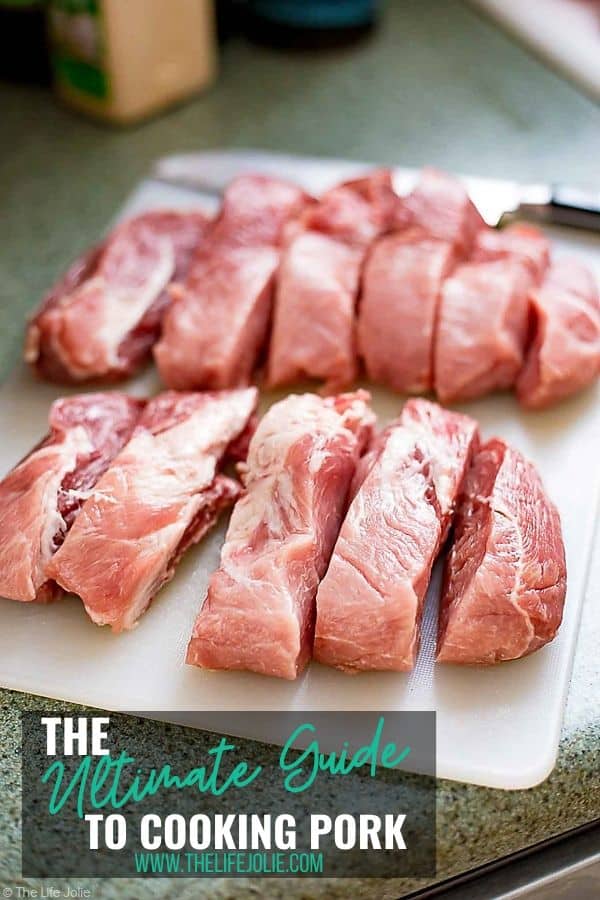
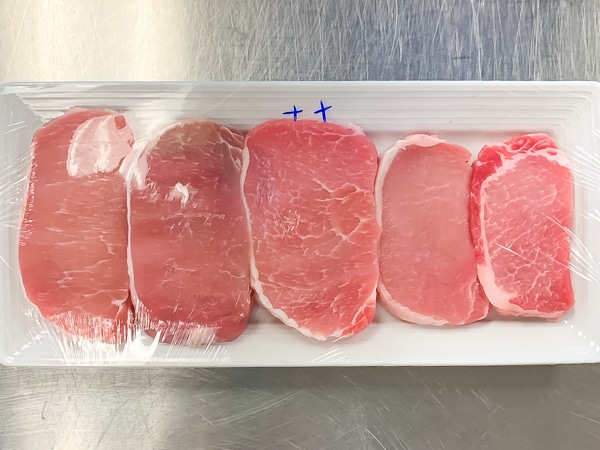
Leave a Reply